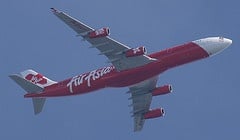Earlier this month we published a report on long haul low cost, investigating the question of whether long haul low cost operations in Asia Pacific are a natural and sustainable extension of the low cost model. With the recent announcement that Lufthansa is looking to move into the long haul low cost market, it is a timely question and there may be answers lurking within that provide Lufthansa with some interesting insight.
Geography clearly plays a part in the success of long haul low cost in Asia Pacific, however the growth rate of many of the core travel markets also provides confidence for the airlines that the demand will continue to rise for the foreseeable future. For Lufthansa and others, the potential development of long haul low cost to/from Europe is arguably more to do with scrapping for market share rather than stimulating and growing markets. The European market is much more mature than Asia Pacific as a whole and there are a plethora of airlines providing long haul services, each with their own particular selling points. There are also many examples of how ‘in-house’ low cost airline off-shoots have failed, for example Buzz – KLM’s original low cost offering, Go – British Airways’ LCC and Ted from United Airlines. However, these were all some time ago – will Lufthansa be able to ‘reinvent the wheel’ and make this a success? Additionally, with reports of a 15% cost per seat advantage for the A330neo, long haul lower cost is certainly on its way for the airlines and may be in Europe before we know it!
What is also clear from analysing the Asia Pacific long haul low cost model is the importance of connecting traffic. There are few long haul markets that can be sustained on local traffic alone and, in an increasingly competitive market place, the power of having a very strong short haul network to complement the long haul has proved vital to the Asia Pacific long haul low cost airlines.
AirAsia X is already setting up subsidiaries in Indonesia and Thailand and will look to India, South Korea, Japan and Taiwan as their next targets given their market size, growth and looser regulatory environments. There is further liberalisation of air traffic yet to come in Asia Pacific that may pave the way for further, accelerated growth. All the while, Intra-Asian air travel – both short haul and long haul – will be low cost by default and this mind set is something that will take far longer to evolve in Europe, if indeed it is ever realised.
Mark Clarkson is OAG’s Business Development Director, ASPAC


